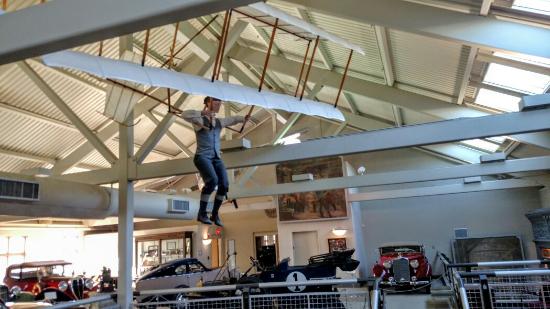

- MOFFETT MUSEUM CARGOLIFTER FULL
- MOFFETT MUSEUM CARGOLIFTER PLUS
- MOFFETT MUSEUM CARGOLIFTER SERIES
- MOFFETT MUSEUM CARGOLIFTER FREE

Rigid airships do not depend on internal pressure to maintain their shape and can be made to virtually any size.
MOFFETT MUSEUM CARGOLIFTER FREE
In the background, ZR-3, in front of it, (l to r) J-3 or 4, K-1, ZMC-2, in front of them, “Caquot” observation balloon, and in foreground free balloons used for training. This airship/aerostat confusion is often exacerbated by the fact that both airships and aerostats have roughly similar shapes and comparable tail fin configurations, although only airships have engines. The narrower and more technical meaning of aerostat refers only to tethered or moored balloons: here, airships are distinct from aerostats. One meaning of aerostat refers to all craft that remain aloft using buoyancy: here, airships are a type of aerostat. This confusion arises because aerostat has two different meanings. There is often some confusion around the term aerostat with regard to airships.

In modern technical usage, airship is the term used for all aircraft of this type, with zeppelin referring only to aircraft of that manufacture, and blimp referring only to non-rigid airships. Although the blimp also qualifies as a "dirigible", the term is seldom used with blimps. In modern common usage, the terms zeppelin, dirigible and airship are used interchangeably for any type of rigid airship, with the term blimp alone used to describe non-rigid airships. The word Luftschiff, German for "airship", usually prefixed their crafts' names. The term zeppelin is a genericised trademark that originally referred to airships manufactured by the German Zeppelin Company. In modern usage, balloon refers to any buoyant aircraft that generally relies on wind currents for horizontal movement, and usually has a mechanism to control vertical movement. Over time, the word balloon was dropped from the phrase. The first airships were called dirigible balloons.
MOFFETT MUSEUM CARGOLIFTER PLUS
In some countries, airships are also known as dirigibles from the French ( diriger to direct plus -ible), meaning "directable" or steerable. USS Akron (ZRS-4) in flight on 2 November 1931 Airships are still used today in certain niche applications, such as advertising, tourism, camera platforms for sporting events, and aerial observation and interdiction platforms, where the ability to hover in one place for an extended period outweighs the need for speed and maneuverability.

MOFFETT MUSEUM CARGOLIFTER SERIES
Their decline continued with a series of high-profile accidents, including the 1937 burning of the hydrogen-filled Hindenburg near Lakehurst, New Jersey, and the destruction of the USS Akron.
MOFFETT MUSEUM CARGOLIFTER FULL
Rigid airships with full skeletons, such as the massive Zeppelin transoceanic models, all but disappeared after several high-profile catastrophic accidents during the mid-20th century.Īirships were the first aircraft to make controlled, powered flight, and were widely used before the 1940s, but their use decreased over time as their capabilities were surpassed by those of airplanes. Semi-rigid airships are slightly larger and have some form of internal support such as a fixed keel. Blimps are small airships without internal skeletons. The main types of airship are non-rigid (or blimps), semi-rigid and rigid. A Zeppelin is a brand name for rigid airships historically built by either the Luftschiff Zeppelin company of Germany or the Goodyear Zeppelin company of the USA, and now of smaller semi-rigid airships built by Zeppelin Luftschifftechnik, also of Germany. Unlike other aerodynamic aircraft such as fixed-wing aircraft and helicopters, which produce lift by moving a wing, or airfoil, through the air, aerostatic aircraft, such as airships and hot air balloons, stay aloft by filling a large cavity, such as a balloon, with a lifting gas. Powered aircraft using other means of liftĪn airship or dirigible is a lighter-than-air aircraft that can be steered and propelled through the air using rudders and propellers or other thrust.


 0 kommentar(er)
0 kommentar(er)
